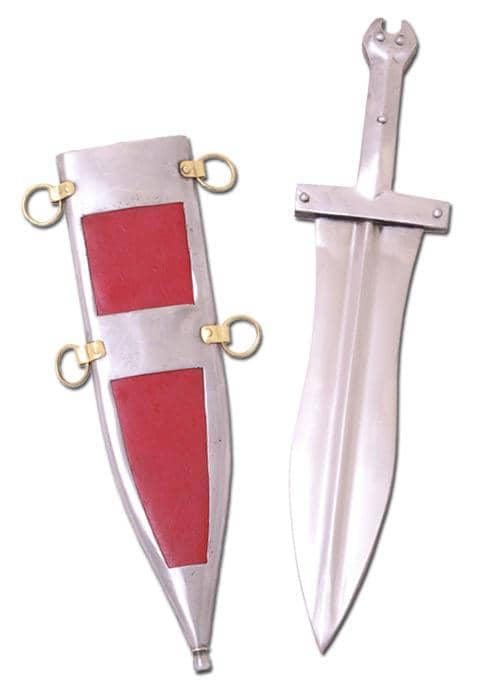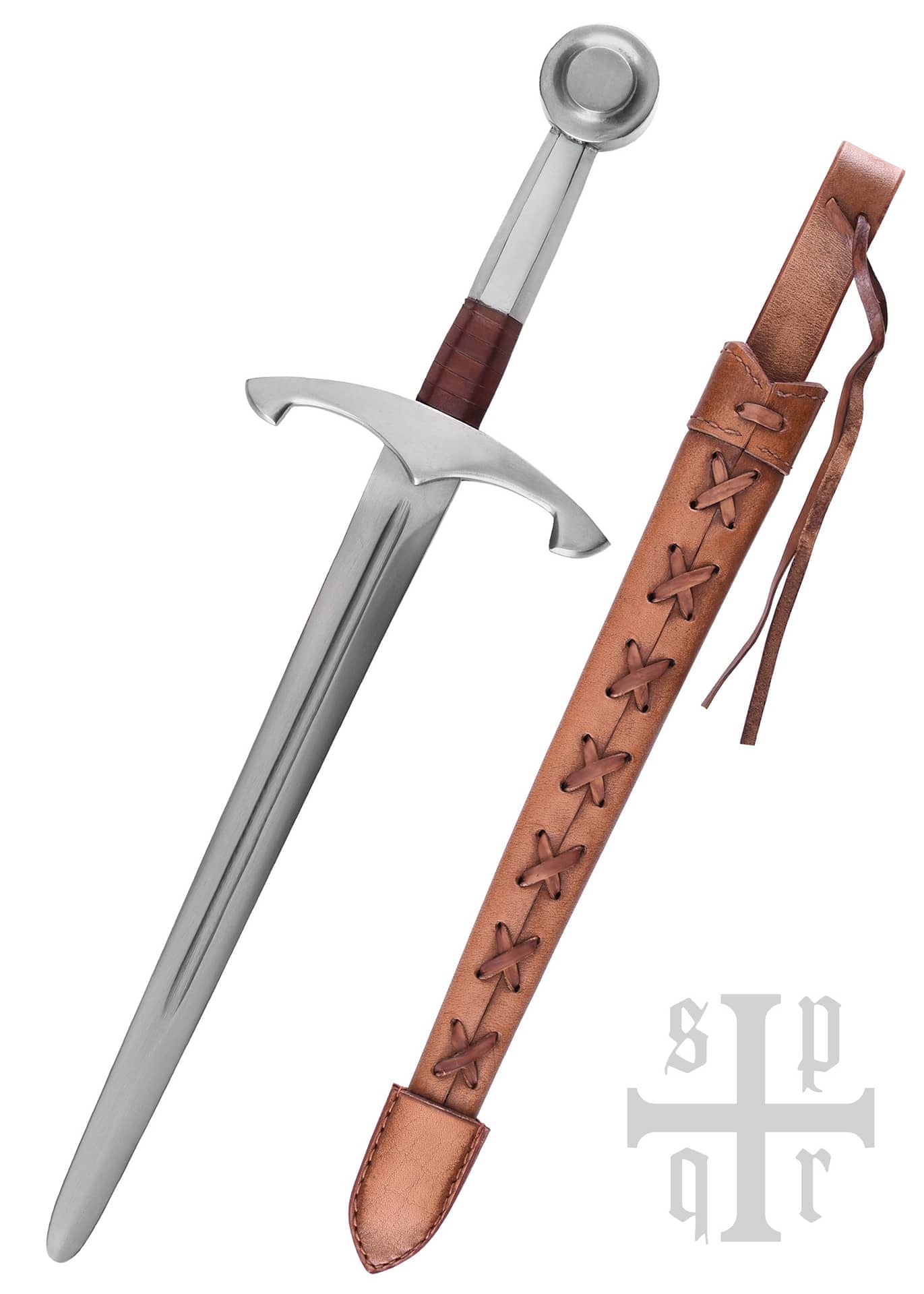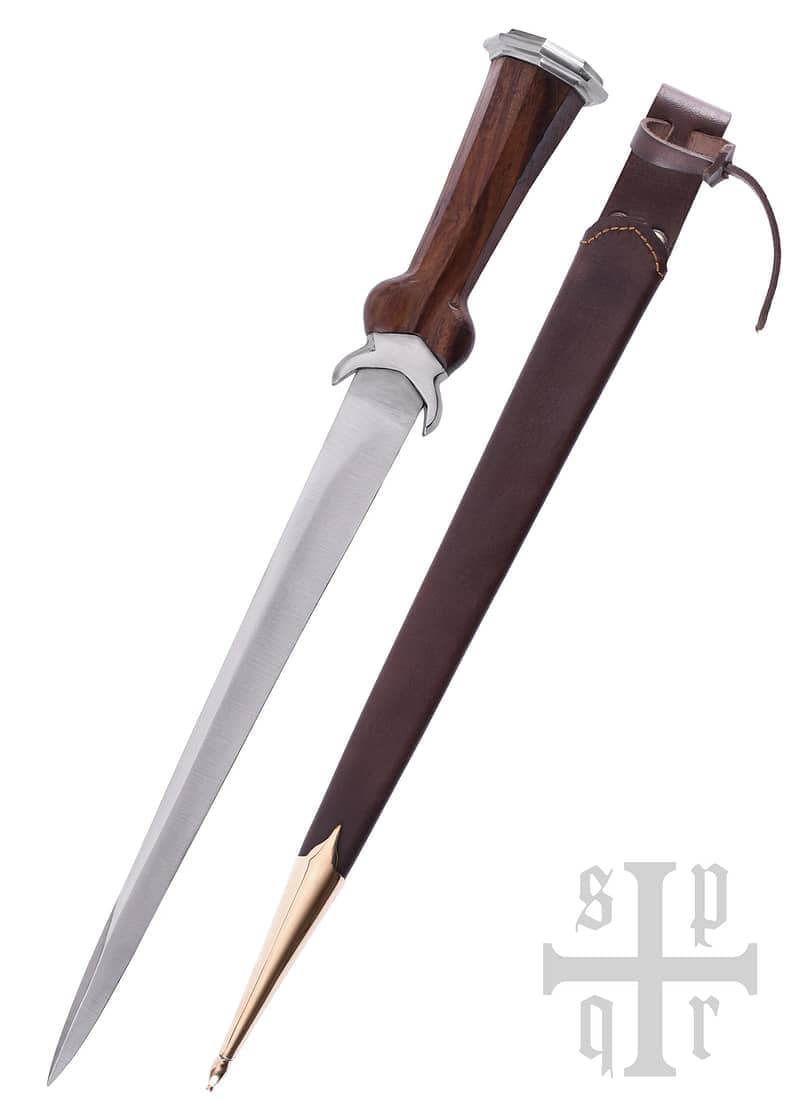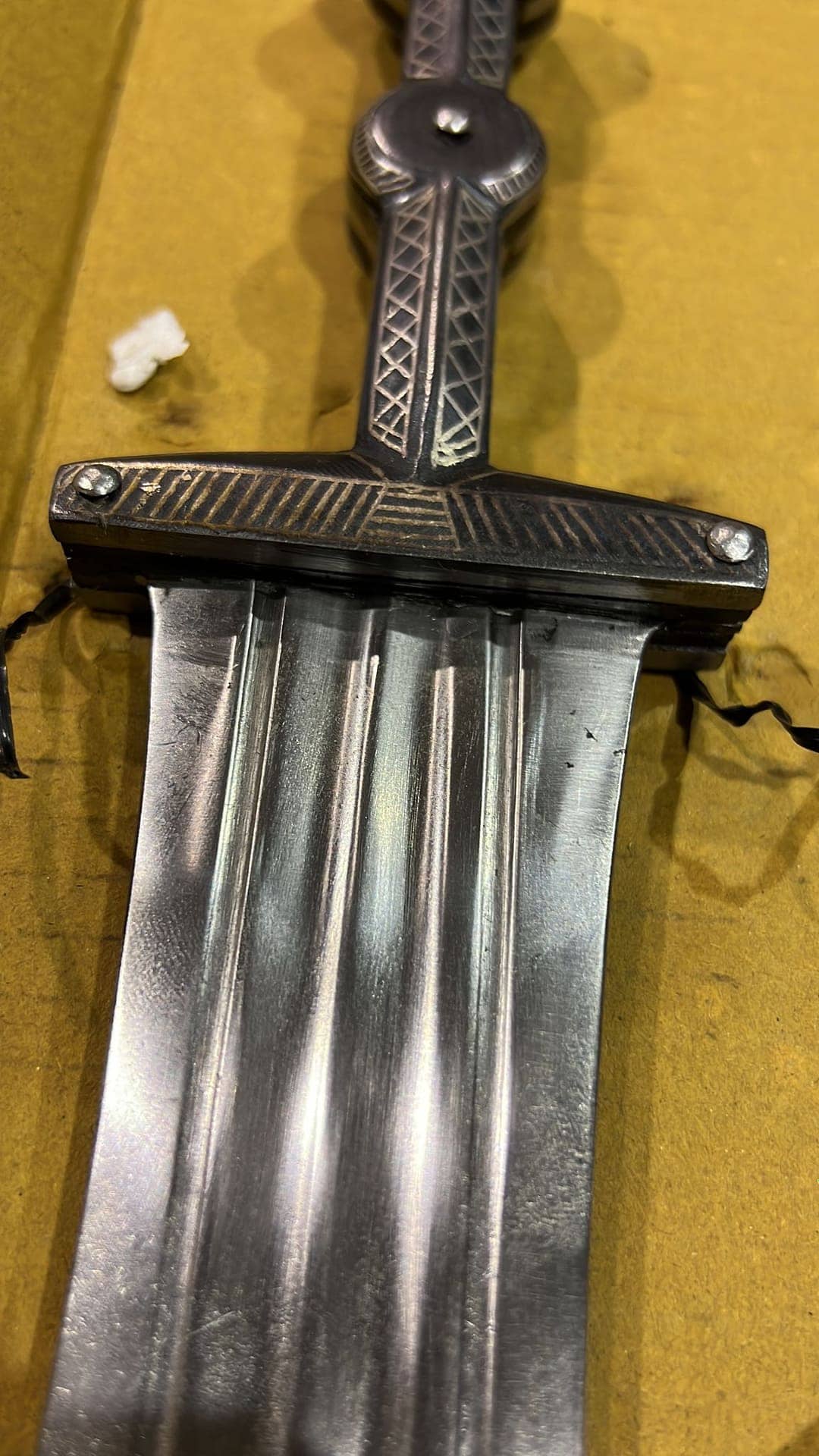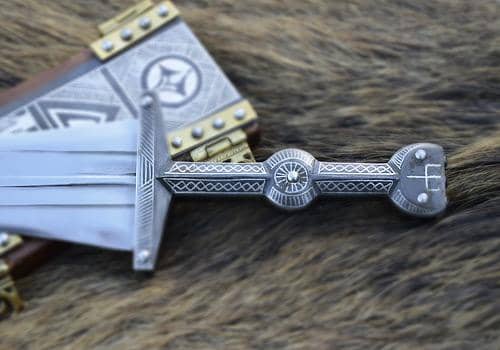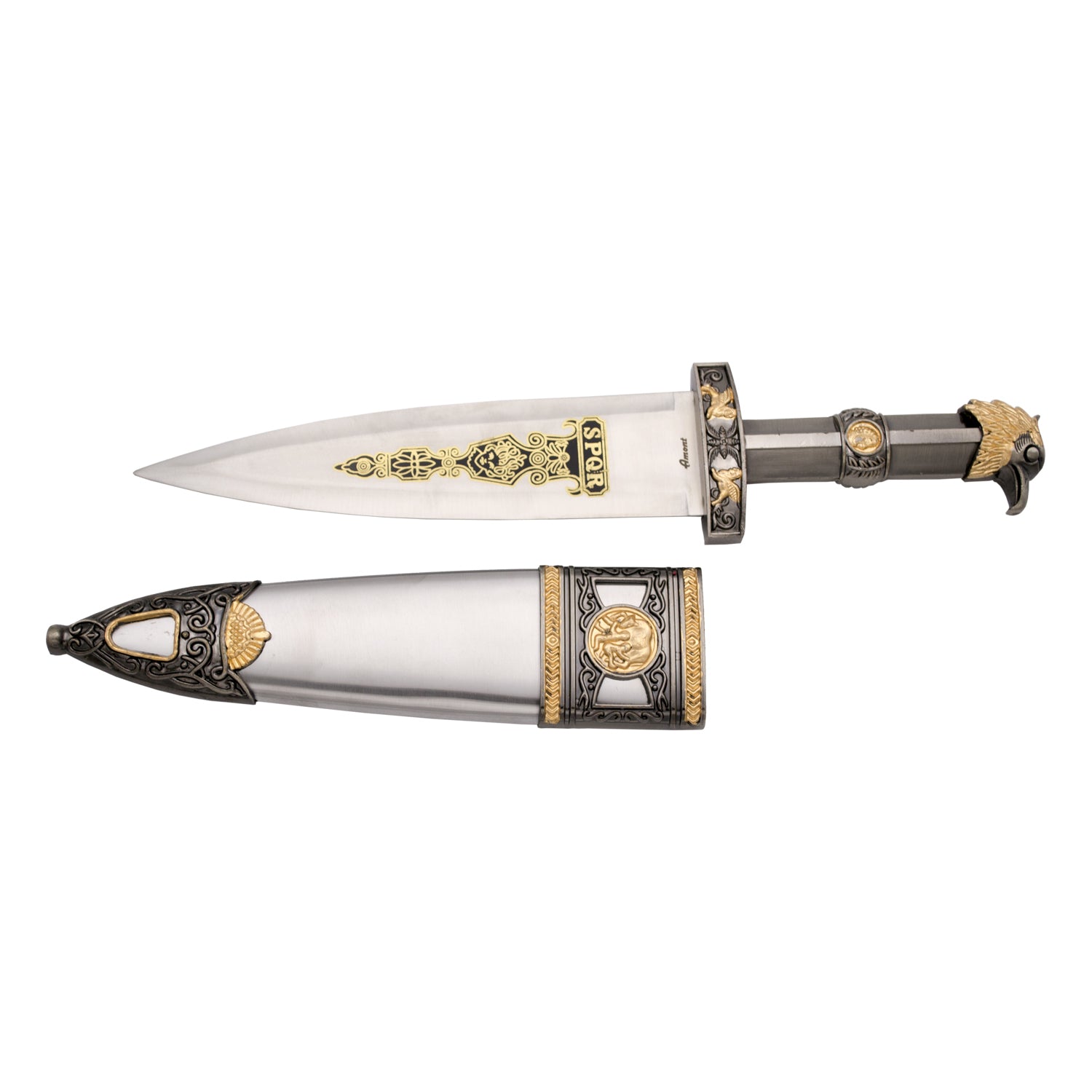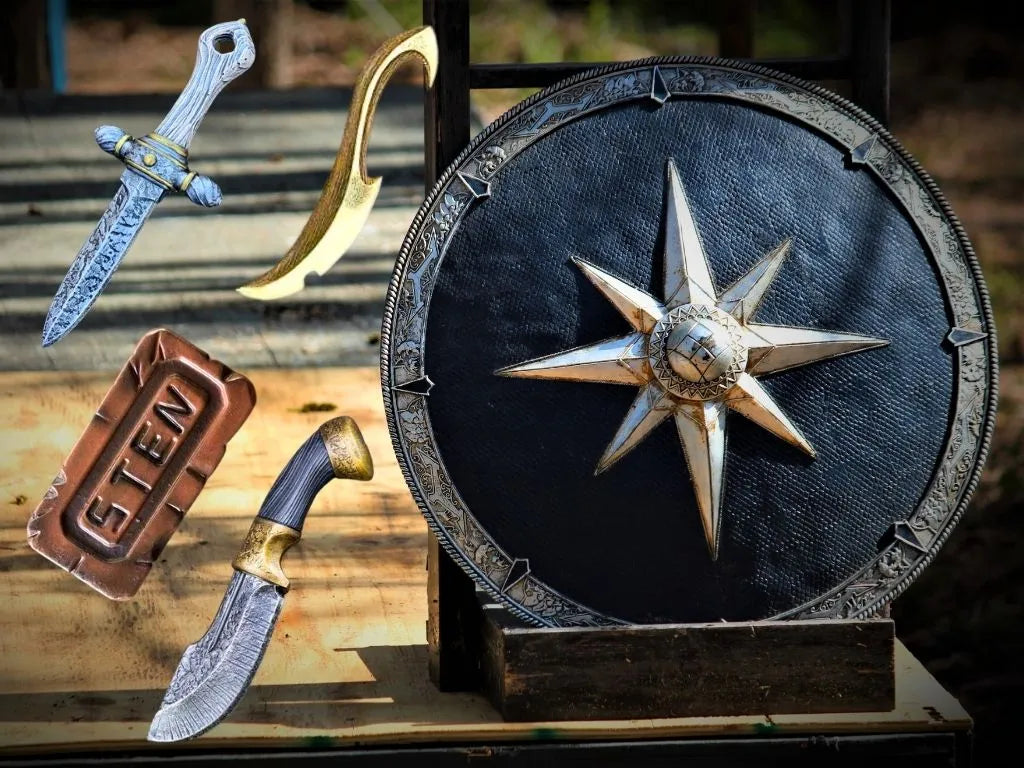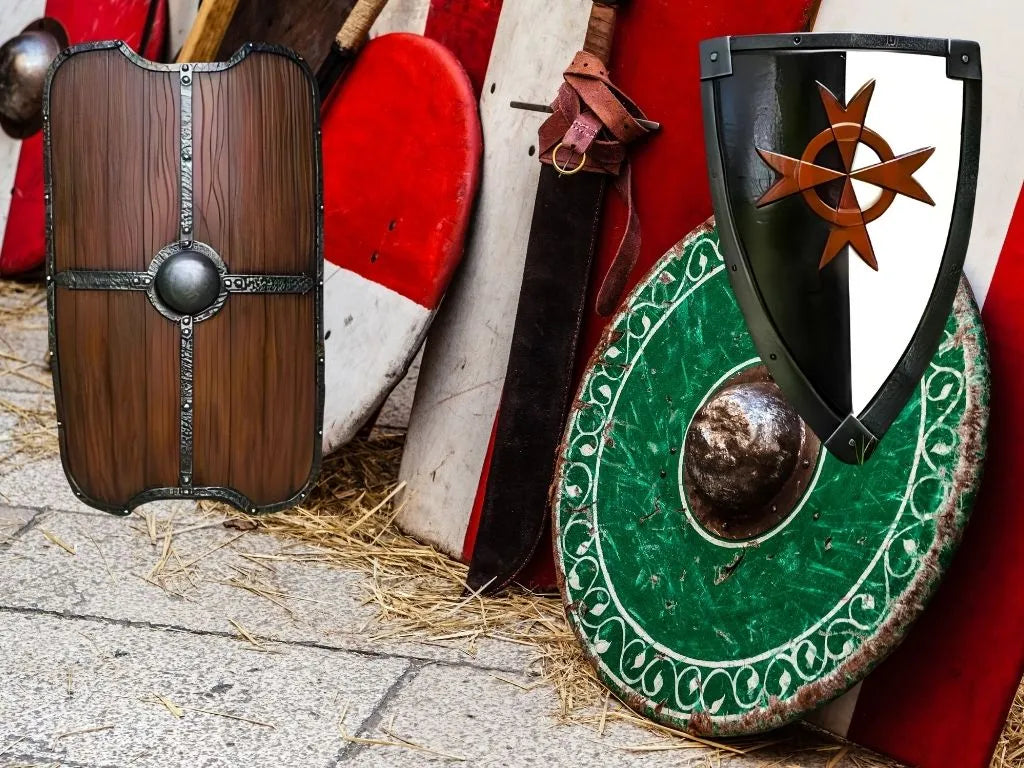Choose options
Dura Europos Roman dagger with sheath, 3rd century AD Chr.
Dura-Europos (also Doura-Europos or Dura-Europos ) was a fortified city built in 303 BC. Founded on the banks of the Euphrates (in present-day Syria) and conquered by the Romans in 165 AD Due to its geographical location in the crossroads of several empires, was a melting pot of cultures and traditions. It remained in Roman hands for almost a century before it was conquered by the Sassanid Persians in 256-257 AD. Following the conquest and deportation of its entire population, The city was abandoned and left to decay until it eventually disappeared completely under layers of sand. It was rediscovered by chance in the 1920s and turned out to be an incredibly important archaeological site,
The late Roman dagger offered here is based on fragments of decorative metal scabbard plates that were found during excavations at Dura Europos (1928-1937) and in Budapest, Hungary. On the front side is the red wooden/leather scabbard with an openwork, counter-fitting, decorated marked brass plate. Although only about 200 examples have survived to this day, research findings indicate that this type of decorative scabbard fittings and the peculiar spoon-shaped scabbard shape were established features of Roman knife cases from the late 2nd to 4th century. The scabbard is also fitted with two brass rings and a leather strap. Other counter fittings that have been found suggest that such scabbards were hung from a belt by means of a cord and worn horizontally, with the unusual end piece serving as a counterweight to the dagger handle.
Since the hard dagger itself is no longer preserved, this reconstruction is based on parts of the blade and handle from traditional or partly traditional copies from the 3rd century (found in Hungary, Denmark and Switzerland, among others). In contrast to the broad, double-edged Pugio of the early Roman Empire, the blade here is much narrower and has a single, curved cutting edge and a slightly sloping back. It is made of EN45 spring steel and is not sharpened. The handle is made of wood, the ferrule and pommel are made of brass. Interestingly, the hilt cap shows certain similarities to the knobs later used on some Sax knives during the Migration Period and the Viking Age.
It should be noted that this Roman dagger is not suitable for display combat. It is designed as a collector's item or decorative object and is also ideal as an accessory, for example to complete your costume. This finely crafted piece of Roman history will make your interpretation of a legionary from the late Roman Empire look even more authentic.
Details:
- Material: EN45 spring steel blade (carbon steel, not stainless), wooden handle, cast brass ferrule and knob
- Total length: approx. 31.5cm
- Blade length approximately 19.5 cm
12 cm: - Length
- Blade thickness: approx. 4 mm / 3 mm (cutting edges approx. 1 mm)
- Maximum blade width: approx.2.2 cm
- Includes
Wooden scabbard covered with red leather, brass fittings and support rings - Weight without scabbard: approx. 207 g
- Weight with sheath: approx.342 g
The above specifications may vary slightly from example to example.
The steel used here is not stainless and may have slight traces of corrosion. We recommend regular maintenance of the blade, for example with Ballistol, a universal oil that is ideal for preserving steel goods.
Free shipping
The entire Iberian Peninsula from €60 (*Does not include islands) and shipping worldwide, check our rates
Customer service
We are available from Monday to Friday to answer your questions.
Secure Payment
We comply with all regulations to ensure Secure Payment
Contact us
Need to contact us? Just email us at info@espadasymas.com






